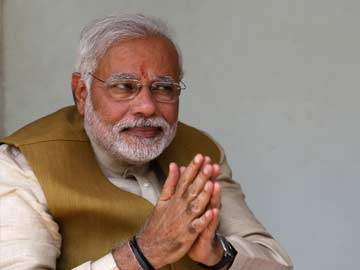Tibetan Exiles a Source of Tension in China-India Ties
Ellen Barry, The New York Times | Updated: June 09, 2014 02:37 IST

Photo credit: AP
File photo of Prime Minister Narendra Modi.
But as the two giant neighbors attempt to reinvigorate their relationship with a series of top-level meetings this week, one image may interfere: that of a Tibetan man who was led to a front-row seat at Modi's swearing-in last month.
He is Lobsang Sangay, the prime minister of Tibet's India-based exile government, and a man who is rarely invited to official ceremonies for fear of provoking the wrath of China.
China has denounced the exiles and their spiritual leader, the Dalai Lama, as separatists, often curtailing diplomatic relations with foreign governments who receive them. On the day of the ceremony, Sangay was still smarting from a recent snub in Norway, and he was initially unsure what to make of the invitation in New Delhi.
"I thought, 'Maybe I will get to sit at the back end, as long as I can sit in the shade.' But then I showed them the ticket and they told me to go to the front," said Sangay, head of the Central Tibetan Administration, which has been arguing for three traditionally Tibetan provinces to be granted "genuine regional autonomy" within China.
Sangay's presence at the event - at the request of Rashtriya Swayamsevak Sangh, the influential Hindu nationalist organization that began Modi's political career decades ago - attracted little notice until last week, when China lodged a formal complaint with India, according the Times of India.
It points to abiding tensions between the world's two most populous countries, focusing on their shared 2,521-mile border and dating back more than 50 years, to China's territorial claim over Tibet.
Even as Modi pursues closer economic ties with China, there have been reminders of deep suspicion from India's security establishment.
Modi's new junior minister for internal security is from Arunachal Pradesh, a region claimed by China. And on Sunday, the day China's foreign minister, Wang Yi, arrived in New Delhi, an Indian newspaper reported that China has been building up a military presence in Pakistan-controlled Kashmir, citing a classified document leaked by India's Intelligence Bureau.
"The basic outlook is that we want to do more on the business side; that doesn't mean they are going to be different on security issues," said C. Raja Mohan, a leading strategic affairs analyst in New Delhi. He said China, facing turbulent relations with neighbors like Japan and Vietnam, has sent a similar message to India.
"I think they're signaling that they would like this part of the periphery to be reasonable and tranquil," he said. "They have not indicated anything on boundary disputes or reducing their relations with Pakistan."
China's public statements since Modi took office have been uniformly positive, and Wang told The Hindu, a daily newspaper, that President Xi Jinping had "personally instructed him" to visit India soon after Modi took office.
Wang said he had come bearing the message that "China stands by your side throughout your efforts of reform and development, and your pursuit of dreams."
China is offering to help India set up special economic zones and promote industrial development clusters, and has already sent a delegation to inspect prospective sites. Wang said some Chinese business had already begun construction on industrial facilities, and were hoping for preferential policies to speed up the process.
But tension over border issues was not far away. Sunday morning, before Wang arrived for his first scheduled meetings, security forces in New Delhi took up positions around a Tibetan neighborhood in north Delhi. Several hundred activists from the Tibetan Youth Congress, who had gathered to stage a protest outside the Chinese Embassy, were locked in and unable to leave, said Tenzing Jigme of the Tibetan Youth Congress.
Two years ago, during a visit by President Hu Jintao of China, a 26-year-old Tibetan exile set himself on fire to protest China's policies in Tibet and later died. Graphic footage of his act was seen around the world, providing the exile community with a rallying point.
Among the strongest advocates for Tibet's exile movement in New Delhi is Rashtriya Swayamsevak Sangh, the nationalist party that recommended inviting Sangay to the swearing-in ceremony on May 26.
Pemba Tsering, the speaker of Parliament in the Tibetan exile government in Dharamsala, said the invitation sent the message that "we will not see a downgrading in Tibet as an issue for India" with the change of governments.
Mohan said that support for the Tibetan exiles ran deep in Indian society, regardless of party.
"We're still the only ones who support them," he said. "The Indians are the only ones who still give them shelter, and we are willing to stand by that commitment."
He added, though, that Delhi was not likely to ever return to the forceful advocacy of the 1960s, when the Indian army fought a brief war with China over border incursions.
"There will be more empathy, more affection visibly," Mohan said. "How much are they willing to do? That will be interesting." http://www.ndtv.com/article/india/tibetan-exiles-a-source-of-tension-in-china-india-ties-538233